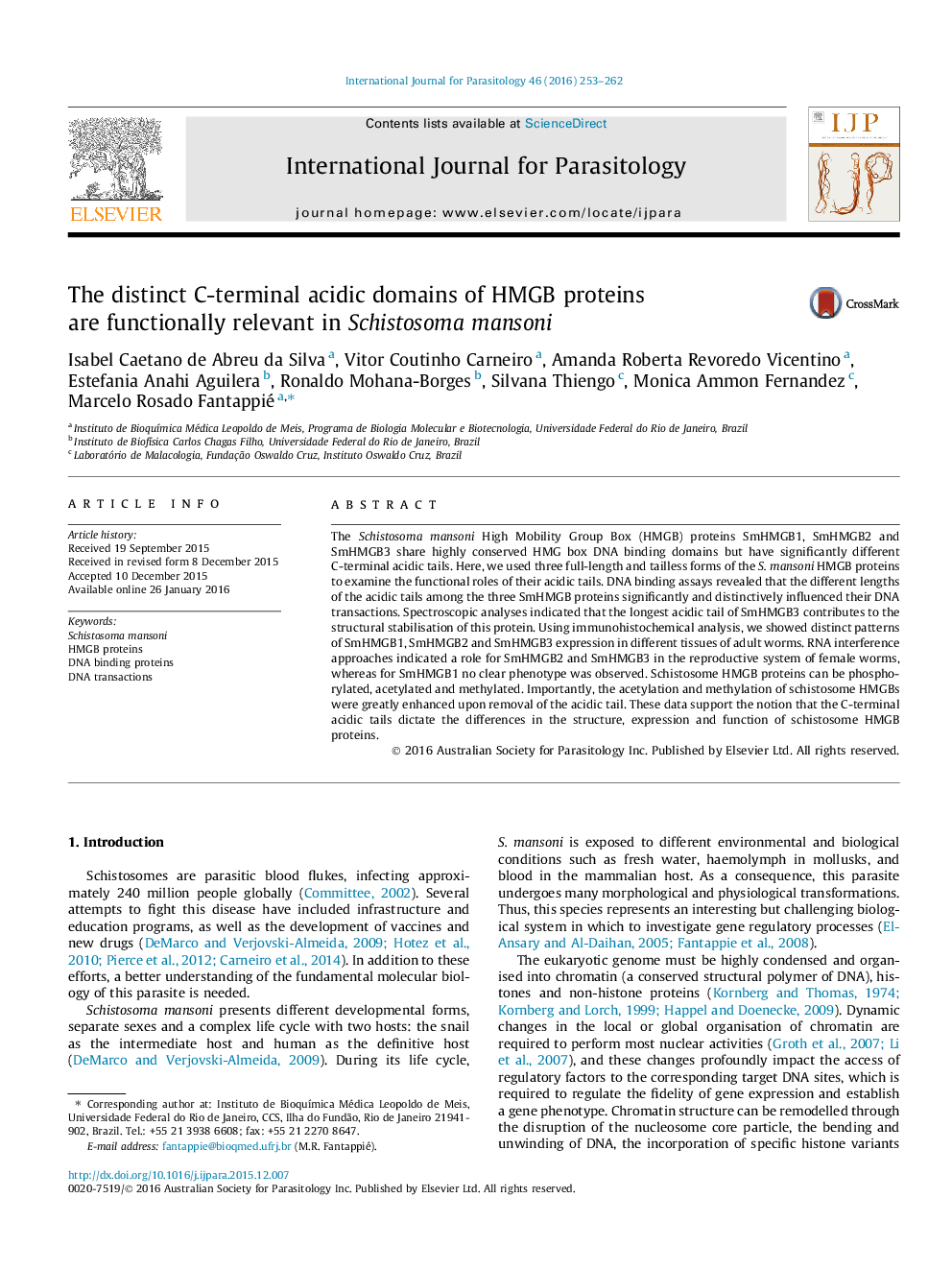| Article ID | Journal | Published Year | Pages | File Type |
|---|---|---|---|---|
| 2435954 | International Journal for Parasitology | 2016 | 10 Pages |
•Schistosoma mansoni contains three members of the HMGB protein family.•Schistosome HMGB proteins promote structural changes in the DNA.•The acidic tails of schistosome HMGB proteins are functionally relevant.•Schistosome HMGBs may have potential roles in female sexual development.
The Schistosoma mansoni High Mobility Group Box (HMGB) proteins SmHMGB1, SmHMGB2 and SmHMGB3 share highly conserved HMG box DNA binding domains but have significantly different C-terminal acidic tails. Here, we used three full-length and tailless forms of the S. mansoni HMGB proteins to examine the functional roles of their acidic tails. DNA binding assays revealed that the different lengths of the acidic tails among the three SmHMGB proteins significantly and distinctively influenced their DNA transactions. Spectroscopic analyses indicated that the longest acidic tail of SmHMGB3 contributes to the structural stabilisation of this protein. Using immunohistochemical analysis, we showed distinct patterns of SmHMGB1, SmHMGB2 and SmHMGB3 expression in different tissues of adult worms. RNA interference approaches indicated a role for SmHMGB2 and SmHMGB3 in the reproductive system of female worms, whereas for SmHMGB1 no clear phenotype was observed. Schistosome HMGB proteins can be phosphorylated, acetylated and methylated. Importantly, the acetylation and methylation of schistosome HMGBs were greatly enhanced upon removal of the acidic tail. These data support the notion that the C-terminal acidic tails dictate the differences in the structure, expression and function of schistosome HMGB proteins.
Graphical abstractFigure optionsDownload full-size imageDownload high-quality image (117 K)Download as PowerPoint slide
